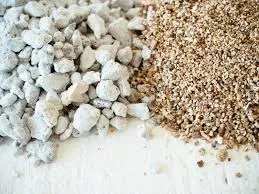Nov . 12, 2024 00:57 Back to list
sound absorbent materials
Sound Absorbent Materials Enhancing Acoustic Comfort
In our increasingly noisy world, sound absorbent materials play a critical role in enhancing acoustic comfort across various environments. These materials are designed to reduce noise pollution by absorbing sound energy, thereby minimizing echo and reverberation. This article explores the significance, types, and applications of sound absorbent materials.
The Importance of Sound Absorbent Materials
Sound absorption is essential for numerous reasons. First and foremost, it contributes to improved acoustics in spaces such as auditoriums, conference halls, and recording studios, where clarity of sound is fundamental. These materials can significantly enhance the quality of sound by reducing unwanted noise and preventing sound waves from reflecting off hard surfaces. This is particularly important in environments where speech intelligibility is crucial, such as classrooms and open office spaces.
Moreover, sound absorbent materials improve overall comfort in residential and commercial environments. Excessive noise can lead to stress, reduced productivity, and even health issues. By employing sound absorbent materials, we can create a more tranquil atmosphere conducive to relaxation and focus, making them invaluable in homes, workplaces, and public venues.
Types of Sound Absorbent Materials
Sound absorbent materials can be categorized into various types, each with unique properties and applications
1. Acoustic Foam This is one of the most popular sound absorbent materials. Acoustic foam panels are typically made from polyurethane and feature a convoluted surface that traps sound waves. They are commonly used in recording studios, music rooms, and home theaters to enhance sound quality.
2. Mineral Wool Also known as rock wool or stone wool, this material is made from natural or recycled materials and is known for its excellent sound absorption properties. Mineral wool is commonly used in construction for soundproofing walls, ceilings, and floors.
3. Fiberglass Panels These lightweight panels are made from tightly packed fibers of glass. Fiberglass has a high acoustic absorption coefficient, making it an effective choice for commercial and industrial settings, such as factories and warehouses.
4. Carpet and Rugs While often overlooked, soft furnishings like carpets and rugs can significantly reduce sound reflection. They help to dampen noise within a room and are often used in residential design to create a cozy and tranquil environment.
sound absorbent materials

5. Acoustic Tiles These ceiling or wall-mounted tiles come in various shapes, sizes, and materials, and are specifically designed to absorb sound. Many businesses utilize acoustic tiles to enhance the auditory experience in offices and retail spaces.
Applications of Sound Absorbent Materials
The applications of sound absorbent materials are diverse and can be found in numerous settings
- Educational Institutions Schools and universities often utilize sound absorbent materials to ensure clear communication in classrooms and lecture halls, enhancing the learning experience.
- Healthcare Facilities Hospitals and medical clinics need quiet environments for patient recovery and comfort. Sound absorbent materials help in maintaining a serene atmosphere, reducing the stress associated with noise in healthcare settings.
- Hospitality Industry Hotels and restaurants frequently implement sound absorbing solutions to create a peaceful ambiance that enhances guest experience, allowing for comfortable conversations without overwhelming background noise.
- Home Environments As more people seek comfort in their homes, sound absorbent materials such as curtains, upholstered furniture, and wall hangings have become popular choices for reducing noise and improving overall living conditions.
Conclusion
Sound absorbent materials are essential in today’s sound-dominated world, playing a pivotal role in creating comfortable and functional spaces. With a variety of options available, from acoustic foam to specialized panels, these materials can be tailored to meet the specific acoustic needs of different environments. By addressing noise issues through effective sound absorption, we can foster environments that promote well-being, productivity, and peace of mind. As awareness of noise-related challenges continues to grow, the significance of sound absorbent materials will only increase, driving innovation and further applications in various industries.
-
Eco-Friendly Granule Covering Agent | Dust & Caking Control
NewsAug.06,2025
-
Fe-C Composite Pellets for BOF: High-Efficiency & Cost-Saving
NewsAug.05,2025
-
Premium Tundish Covering Agents Exporters | High Purity
NewsAug.04,2025
-
Fe-C Composite Pellets for BOF | Efficient & Economical
NewsAug.03,2025
-
Top Tundish Covering Agent Exporters | Premium Quality Solutions
NewsAug.02,2025
-
First Bauxite Exporters | AI-Optimized Supply
NewsAug.01,2025
